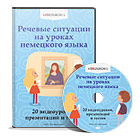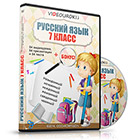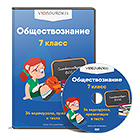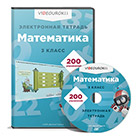Задания для рубежного контроля № 1
по дисциплине «Английский язык для академических целей».
Курс «Английский язык для академических целей» предполагает также написание резюме, эссе и реферат (на английском языке) по темам модулей.
1. Напишите эссе по темам модулей, соблюдая структуру эссе (т.е. Введение, Основная часть и Заключение). Структура и образец написания эссе даны в методических рекомендациях по изучению дисциплины.
Темы:
1) Knowledge
2) Organization
3) Motivation
4) Nature
5) Power
6) Growth
Nature
(Essay)
Nature is the natural environment which surrounds us, cares us and nourishes us every moment. It provides us a protective layer around us to prevent from the damages. We are not able to survive on the earth without nature like air, land, water, fire and sky. Nature includes everything around us like plants, animals, river, forests, rain, lake, birds, sea, thunder, sun, moon, weather, atmosphere, mountain, desserts, hills, ice, etc. Every form of nature is very powerful which has ability to nourish as well as destroy us. Now a day, everyone has less time to enjoy nature. In the increasing crowd we forgot to enjoy nature and improve health. We started using technological instruments for our health fitness. However it is very true that nature has power to nourish us and fit us forever. Most of the writers have described the real beauty and advantage of the nature in their writings. Nature has ability to make our mind tension free and cure our diseases. Because of technological advancement in the life of human being, our nature is declining gradually which needs a high level of awareness to keep it in balance and to conserve natural assets. God has created everything very beautifully seeing which our eyes can never be tired. But we forgot that we too have some responsibility towards our nature to relationship between nature and human beings. How beautiful scenery it looks in morning with sunrise, songs of birds, sounds of lakes, rivers, air and happy gatherings of friends in the evening in garden after a long day of crush. But we forgot to enjoy the beauty of the nature in just fulfilling our duties towards our families. Sometimes during our holidays we spend our whole day by watching TV, reading news paper, playing indoor games or on the computer but we forgot that outside the door we can do something interesting in the lap of nature ad natural environment. Unnecessarily we left on all the lights of home, we use electricity without need which ultimately increases the heat in the environment called global warming. Our other activities like cutting trees and forests increase the amount of CO2 gas in the environment causing green house effect and global warming. If we want to be happy and healthy always we should try our best to save our planet and its beautiful nature by stopping our foolish and selfish activities. In order to keep ecosystem in balance we should not cut trees, forests, practice energy and water conservation and many more. Ultimately we are the real user of the nature so we should really take care of it.
2. Найти статью по своему профилю, направлению (специальности) и написать резюме на английском языке. Объем статьи – не менее 1,5 - 2 страниц ( на английском языке) Выслать статью с резюме.
ICT in Education
The widespread use of Information and Communication Technologies (ICT) has till now influenced all fields in life, among which lies education. Many countries see ICT as a potential tool for change and innovation in the education field (Erdogan, 2009, adapted from Eurydice, 2001; Papanastasiou & Angeli, 2008) and thus, they make large investments in the integration of ICT in schools. For example, Europe and Central Asia allocate 22% of their budget to ICT (Erdogan, 2009, adapted from World Bank, 2007). According to Pelgrum and Law (2003) ICT in education became popular in educational policy-making in the early 1980s, when consumer market began the sale of cheap microcomputers. These intellectuals also noted that by the early introduction of microcomputers in education in 1980s, education was expected to be more effective and motivating.Hepp, Hinostroza, Laval and Rehbein (2004) advocated in their paper “Technology in Schools: Education, ICT and the Knowledge Society” that ever since the inception of ICTs in education, they have been used but not to its maximum. Although in the early 1980s computers were not been fully integrated in the learning of traditional subjects, the commonly accepted perception that the system of education would have to prepare the students for a knowledgeable society increased the interest in ICTs (Pelgrum, W.J., Law, N., 2003). Moreover, Kozma and Anderson (2002) write in their paper “ICT and Educational Reform in Developed and Developing Countries” that for an economy to be knowledgeable education should be its primary necessity. Simultaneously, the teaching strategies in schools are bending towards ICT. This change towards ICT has been very dramatic. Similarly, Kozma and Wagner (2003) agreed on that idea that the ICT will enhance the basic education and is a very challenging field of development work nowadays, in both poor and wealthy nations (Wagner, D., Kozma, R., 2003). Additionally, still in the field of ICT in education, Ezer (2005) points out that ‘the ICT for development literature often treats education ‘in passing”. Importance of ICT in schools ICT can be used in three ways at schools: for teachers to present, assess and monitor knowledge; to enhance administrative work; as “learning content in relationship to students’ information literacy” (Myungnghee Kang et al., 2011). STUDENTS: Over the past few years, several large-scale international studies have documented the successful integration of ICT in schools (Lim & Hang, 2003, adapted from Mann, Shakeshaft, Becker & Kottkamp, 1999; Sivin-Kachala, 1998; Wenglinsky, 1998). These research studies have shown that ICT facilitates the acquisition of higher order thinking skills by providing cognitive scaffoldings for students as they make sense of the information gathered; allowing experts, teachers and students to communicate their thoughts and interests in subject matters and simulating real-life situations and problems for students as they explore the connections between concepts and ideas. 21st century children choose to look for answers to their questions on the internet (Myungnghee Kang et al., 2011). Also, students who had followed ICT courses had more possibilities of being employed as most of the jobs nowadays require a good knowledge of ICT. Research studies have brought forward the fact that the use of ICT as well as other teaching strategies have enabled students to move to higher-order thinking (Jonassen & Carr, 2000; Kearney &Treagust, 2001; Oliver & Hannafin, 2000). Thus, students develop constructive thinking skills. As a result the students are learning in order to prepare themselves for the future information age.(Salomon, 1993). According Kozma (2005) ICT can be used to enhance student understanding thus increasing the quality of Education. In addition, Papert (1997) noted the advantages of ICT for students and they may be as such: the students are more motivated and as such they become more creative when they are faced with new learning environments. Also, they are prone to assimilate in a disciplined way working collaboratively with their peers. As a result, they are able to generate knowledge. They will have the capacity to handle rapid change in any type of environment. Some theorists acknowledge that ICT can help students to become knowledgeable, reduce the extent to which direct instructions are given to them, and give educators a chance to help those students with special educational needs needs (Iding, Crosby, & Speitel, 2002; Shamatha, Peressini, & Meymaris 2004; Romeo, 2006). EDUCATORS: The integration of technology in schools has brought about changes to teachers’ roles in the classroom. The classrooms where technology is being used have their teachers often compared to that of a facilitator or coach rather than a lecturer (Gahala, 2001, adapted from Henriquez & Riconscente, 1998). As educators use ICT in classroom, their teachings are proved to be very fruitful. Hence, in order to be at such level training is a must for all educators so that they acquire sufficient expertise for effective teaching. As a pedagogical tool ICT can provide a new framework so as to improve teaching. Hence, learning will be done in a collaborative, project-based as well as self-paced way. As students become more independent, teachers who are not familiar to act as facilitators or coaches may not understand how technology can be used as part of activities that are not teacher-directed. This is a situation where the teacher gets an excellent opportunity to learn from the students as well as to model being an information seeker, lifelong learner and risk taker. As part of their job requirements, teachers are expected to use technology tools in many cases. As technology continue to impact on teaching and learning, expectations on teachers to exploit technological advantages will rise, leading teachers to experience the pressures of having to toggle between pedagogy and technology in a seamless way (Teo, 2011, adapted from Pelgrum, 2001). The extent to which this is well-executed depends on teachers’ willingness to employ technology in teaching and learning. When teachers do not use technology the way it was designed to serve, the affordances of technology cannot be maximised for effective teaching and learning to take place. For this reason, many studies on technology acceptance have been conducted over the years and it appeared that these studies had focused on the identification of factors that influenced technology acceptance among teachers and students. These included personal factors such as attitudes towards computers (Teo 2011, adapted from Teo, 2008; Teo & Noyes, 2011), computer self-efficacy (Teo 2011, adapted from Tsai, Tsai & Hwang, 2010), technical factors such as technological complexity (Teo, 2011, adapted from Thong, Hong & Tam, 2002) and environmental factors such as facilitating conditions (Teo, 2011, adapted from Ngai, Poon & Chan, 2007).
Resume
Mobile phone: 87026722462
E-mail: [email protected]
Name: Kasenova Ademi Ruslanovna
Date of birth: 26.11.1997
Place of birth: EKR, Urjar region, village Besterek
Marital status: Not married
Graduated school: "Besterek secondary school" for 2004-2015
Education: Graduated from Semipalatinsk State Pedagogical College named after M. Auezov
Higher education institution: Semipalatinsk State University named after Shakarim
И1У-801 «Informatics»
3rd year
Specialty: 0111000 «Basic secondary education»
Qualification: 0111093 "Teacher of Informatics in the Secondary School"
Work experience: 4 years
"School №31". Computer science teacher
Professional development courses: «Programming, robotics and 3D printing»
Language skills: Kazakh language - native languag, Russian - Fluent, English - Pre intermediate level.
ICT application: I have a high degree of knowledge of Kundelik.kz, Internet, Microsoft Office suite, Adobe Photoshop, Corel draw, AutoPlay Media Studio, Pascal, Borland Delphi, MS Visual Basic, Scratch, Lazarus, Macromedia Flash, Movavi Video Suite, Inkscape, easyQuizzy , iSpring suite, My test pro, Kahoot, Flip PDF, TurboSite, Movies Studios.
Personal qualities: work in a team, creative, responsive.
Hobbies: working with new programs, reading books, watching TV.
















